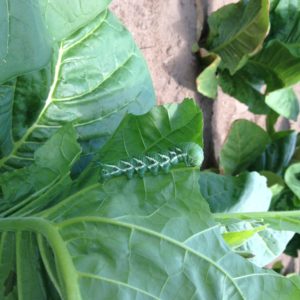September 15, 2016
by CTRF
Comments Off on Harvest Update
An extended period of hot and dry conditions, which slowed the maturity of most crops, appears now to be over. With more seasonal weather conditions anticipated, the rate at which the remainder of the crop matures should improve. It is expected that most growers will need the rest of September and into October to complete harvest.
No widespread disease or insect problems in the field have been reported to date this harvest season. Also, there have been no reports of Blue Mold in Ontario grown tobacco in 2016.
As a result of the dry season so far, nitrogen availability to the crop has been ample and suckers have been more of an issue this year than most. In some fields, stalks are crooked from high winds experienced during a storm earlier in the season, which has made it difficult to properly apply contact sucker controls.
A long yellowing period when curing has been quite common on several farms this season. Fortunately, there have not been many complaints about curing diseases, such as bacterial soft rot and pole rot, which can become more severe when the yellowing period is long.
Earlier this season, we observed plants in several fields that were infected with Tobacco Streak Virus (TSV) (see photo below). No significant economic losses occurred in these fields because of the virus. Sometimes this virus is mistakenly referred to as Tobacco Etch Virus, since some of the symptoms are similar. TSV has been reported here in Ontario in tobacco since the 1930’s, but has never caused significant losses. One unique trait of TSV is that the plant will recover from the viral infection. Usually, 3-6 leaves about mid-plant will show infection from the virus, while leaves at the top and bottom of the plant appear normal. More detailed information about TSV can be found in the Plant Protection area of this website.

Leaves showing symptoms of Tobacco Streak Virus – white lesions present on leaves and along veins, and browning of lesions on older leaves.
At this time of year, CTRF’s field research trials are also being harvested. In addition, monitoring of these trials is ongoing. Below is a photo showing tip leaves being measured in a fungicide evaluation trial near Aylmer, Ontario.

Tip leaf measurements in research trial.
Post prepared and sent by Canadian Tobacco Research Foundation
Mailing Address: CTRF, P.O. Box 322, Tillsonburg, ON N4G 4H5
Telephone: 519-842-8997
Web Address: http://ctrf1.com
















